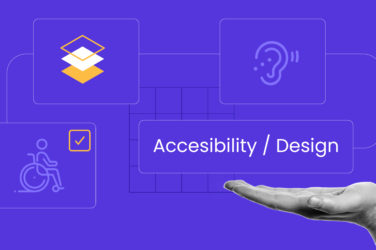The Americans with Disabilities Act of 1990 (ADA) was a landmark civil rights law. It took decades of activism to pass and not only prohibited discrimination of people with disabilities, but also mandated that “public accommodations” be accessible to people with disabilities.
But a lot has changed in the last 30 years and what “public accommodations” means is still being debated in court – especially when it comes to the Internet.
Web accessibility for federal sites is fairly clear. They follow Section 508 of the Rehabilitation Act of 1973, which adheres closely to WCAG 2.0.
Websites for companies is more of a grey area in the eyes of the law.
Take, for example, the case Gil v Winn-Dixie from earlier this month.
Litigation is the primary way to rectify ADA violations. There were 3,550 ADA cases brought to court in 2020. In this case, the 11th Circuit Court ruled that a grocery store’s website wasn’t a “public accommodation” and so it didn’t fall under the ADA.
Gil v. Winn-Dixie
Gil v. Winn-Dixie was brought to the courts by Juan Carlos Gil, who is legally blind. He often went to a Winn-Dixie grocery store to fill his prescription. Then, he found out that he could re-fill his prescription on Winn-Dixie’s websites. He could spend less time sitting at the pharmacy by refilling his prescription online and picking it up later.
But when Gil visited the Winn-Dixie website, he found it incompatible with his screen reader (a screen reader is technology that renders text and image as audio or braille).
The site was not accessible.
Gil brought his case against Winn-Dixie in 2016. He cited Title III of the Americans with Disabilities Act, which states that no one can be discriminated against due to a disability at any place of “public accommodation.”
The court took up the question of whether Winn-Dixie’s site was a “public accommodation.”
At the time of the suit, Winn-Dixie’s website didn’t sell products but was used to re-fill prescriptions and access digital coupons. Because of this, the 11th Circuit court ruled that the Winn-Dixie website was not a “public accommodation.” The court also looked at whether Winn-Dixie’s website created an “intangible” barrier to its services. They found the site didn’t create an “intangible” barrier.
Gil could continue to go into the physical store and wait for a prescription to be filled.
This was ruling was confusing given a case from a few years ago called Robles v. Domino’s Pizza LLC.
Robles v. Domino’s Pizza LLC
In a 9th Circuit in a case from 2019 called Robles v. Domino’s Pizza LLC, the court ruled that the pizza chain’s website and mobile app do fall under the ADA.
The case was similar to Gil in a few ways; Guillermo Robles used a screen reader to access websites. Dominos’ online ordering through their website and app wasn’t compatible with screen reading technology. The court found that, if the website and app are not accessible, customers with a disability are illegally denied full access to the restaurants.
That restaurant and how you order from it are “public accommodations.”
So, according to the courts at this moment, the line between what is and isn’t a “public accommodation” is somewhere between where you order a pizza and where you fill a prescription. Both of these stores have physical locations that are accessible.
So, how do you tell if a website is a “public accommodation?” It’s hard to say. But accessibility should always be top of mind, whether a site is mandated to be accessible or not.
The Case for Accessibility
The law around the ADA is confusing and murky, but having an accessible website helps everyone who visits your site.
There’s an economic argument here. More customers are shopping online, and the pandemic has only accelerated that trend. In 2020, $1 out of every $5 was spent online. That’s up from $1 out of every $7 the year before according to MasterCard. And this trend is projected to continue.
Why leave potential customers off your site?
There is another reason to make your website accessible regardless of whether it is a “public accommodation.” It helps everyone. In a physical store, if you put in a ramp for people who use wheelchairs, your store is also more accessible for people with strollers.
The same goes for your website. Having a large text mode or high contrast mode is useful for many people. Providing a transcript for non-written content like audio and video is good for SEO.
The law around what the ADA covers when it comes to websites is confusing, especially after the latest ruling on Gil v. Winn-Dixie. Hopefully, either the U.S. Supreme Court or Congress clarify the law. But regardless of that, working to make websites more accessible is really important and a win win, whether it’s mandated by the ADA or not.











